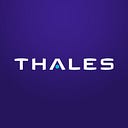To err is human. 2 ways AI can reduce medical errors
Dealing with the cognitive burden of clinical teams
According to a 2018 report, medical errors caused more than 250,000 deaths in the U.S. each year, making it the third leading cause of death. If these figures do not take into account other complications related to medical errors, the number of losses is considerable.
There is no need to put the blame on health care providers — as the saying goes, to err is human.
With shifts of 20 hours or more, stressful environments, regular task interruptions, and increasingly complex procedures and machines, medical teams can experience considerable cognitive load. Based on the total amount of information a working memory can process, this mental burden on clinical teams increases medical errors.
Fast-paced healthcare environments can quickly become error-prone.
The optimal response would be to lighten the cognitive load of healthcare professionals significantly. Unfortunately, it is utopian to imagine optimal, stress-free conditions in contexts such as emergencies, combat care or even during the current pandemic.
To improve patient safety and ensure consistency of care, new technologies such as AI could help professionals give the best of their expertise, every day, in all situations.
This article describes two ways in which AI could reduce medical errors. Both are based on an Augmented Intelligence approach: Artificial intelligence which meets human intelligence.
#1. Provide a safety net
The turning point in medical errors lies in decision-making.
To support healthcare teams in this task, Artificial Intelligence could be implemented in a decision-support system to allow physicians to double-check their own decisions or request a recommendation.
Integrated with existing solutions, such an AI solution could accurately predict decisions or classifications, for example, in contexts such as the need and timing of a patient’s intubation or medical triage.
While we know that some solutions can achieve excellent accuracy, we believe that humans should always be fully responsible for final decisions. The tool should act as a safety net, providing recommendations or warnings only when necessary to avoid errors and provide a consistent patient experience.
#2. Capitalize on your experts’ decision patterns
Since nothing compares to a physicians’ expertise, we believe that a tool such as an intelligent clinical support system must be based on the knowledge and experience of health care professionals.
To this end, AI, combined with human factor technologies, can capture and reproduce human judgments to provide tailored recommendations to specialized services or physicians.
Since the goal of such a solution would be to reduce the cognitive load of health professionals, it would be inefficient to ask experts to annotate large datasets to train the algorithms. Therefore, methods such as frugal and adaptive learning would be appropriate: together, they do not require large datasets but small, qualitative use cases, and they are able to select the most informative data to improve over time.
Two capacities in one solution — reducing medical errors, one decision at a time
Created with safety in mind, our research teams have harnessed the best of AI technologies and human factors to create a decision-support system you can trust.
The result: an online tool that captures the decisions of experts and provides them with recommendations accompanied by confidence-level measures or alerts when the judgment of the expert and the tool are not aligned.
To learn more about our solution, read our white paper here.
Get started with your AI revolution by contacting us at solutions@thalesdigital.io or discover our offer.
Augmented Intelligence — AI enhancing humans
Throughout this article, we have mentioned our vision of AI as Augmented Intelligence. One might think that this new terminology is yet another buzzword, but we are far from it.
The goal of Augmented Intelligence is to empower humans, whereas Artificial Intelligence is intended to imitate and replace human tasks. By putting humans at the center, this new approach allows us to solve problems of ever greater complexity while maintaining the same trust level.
To get monthly insights on how to develop an Augmented Intelligence you can trust, subscribe here.
